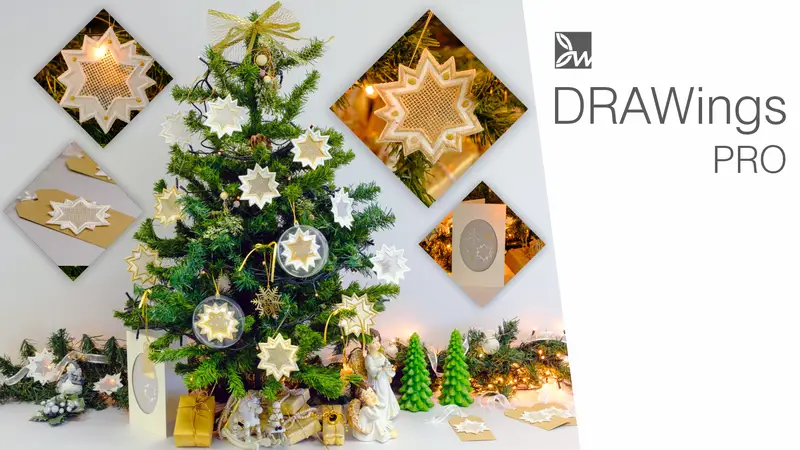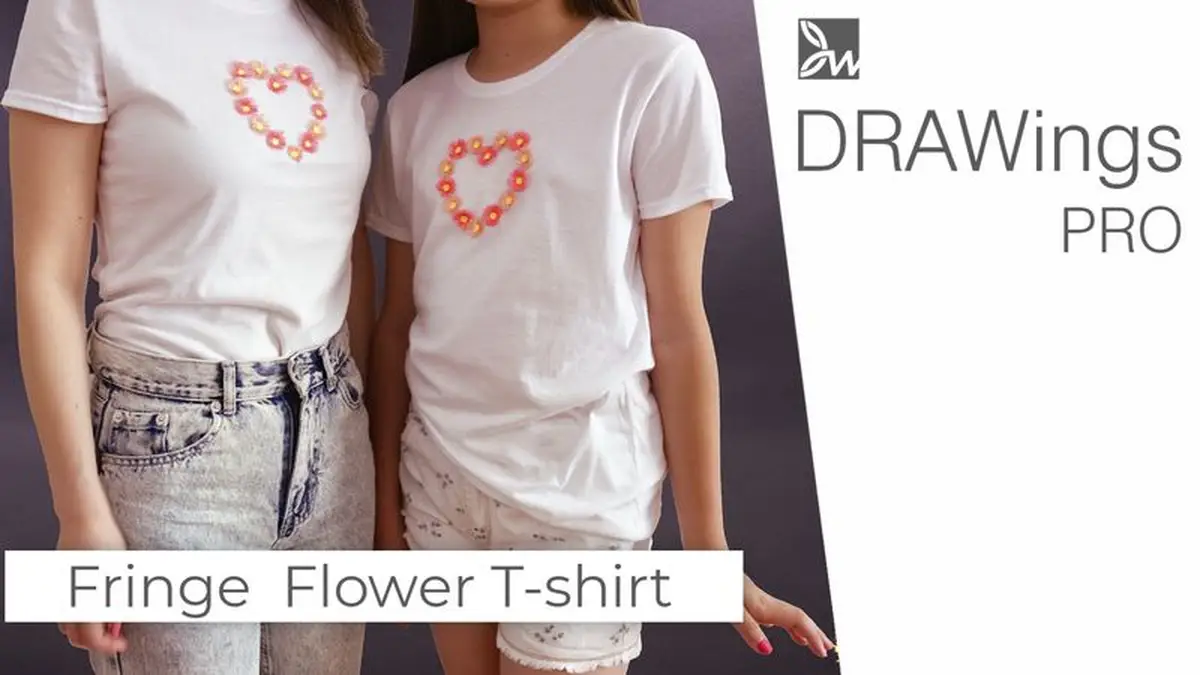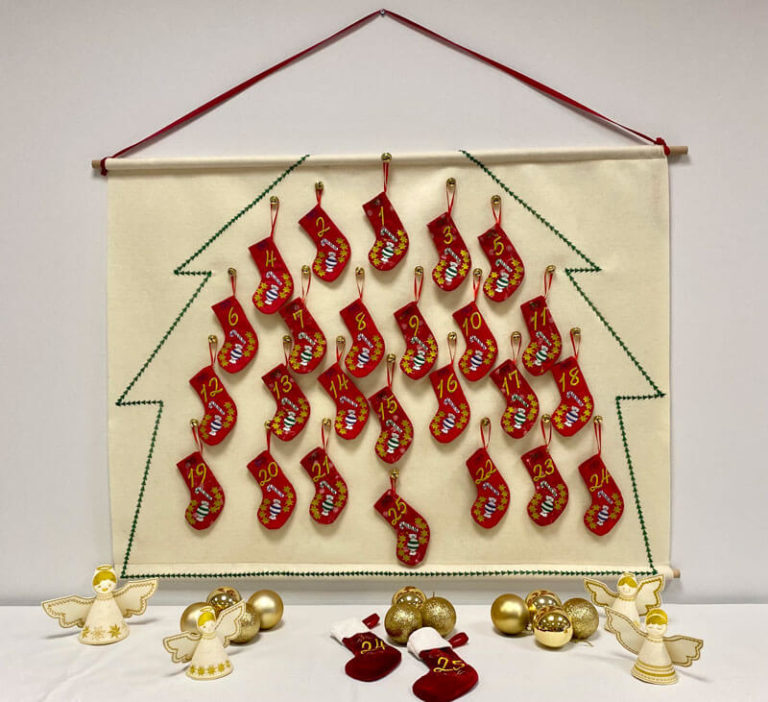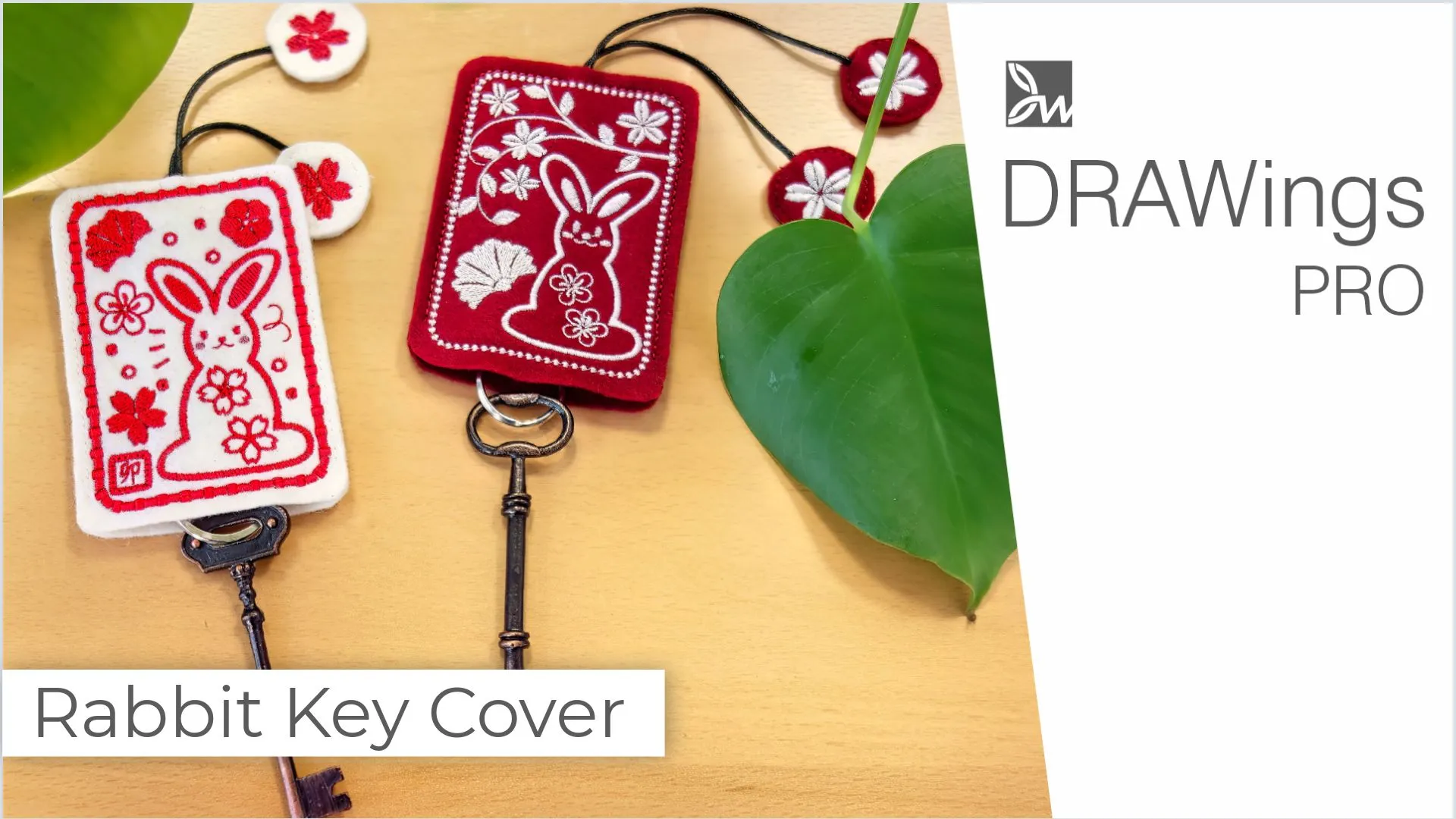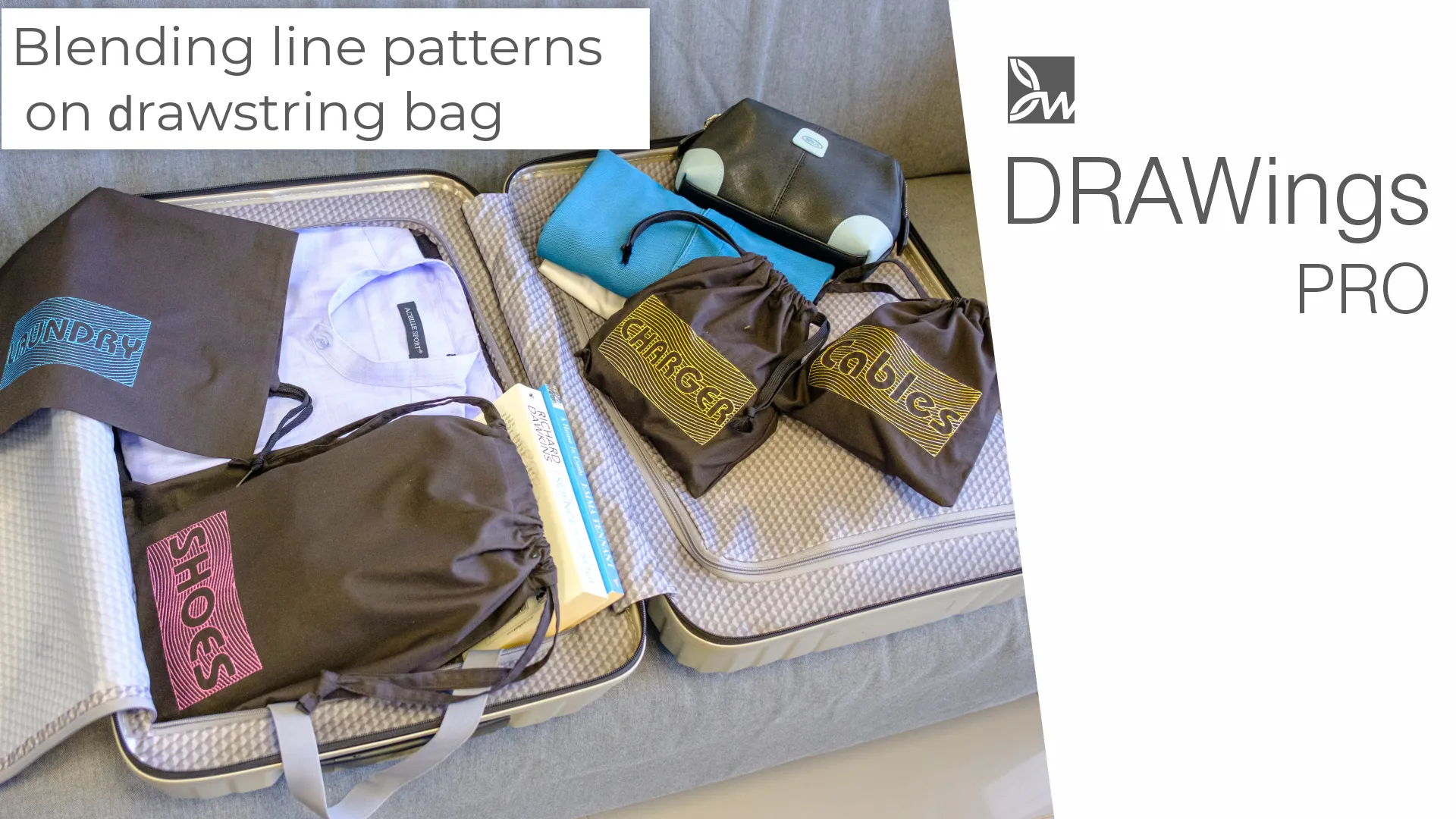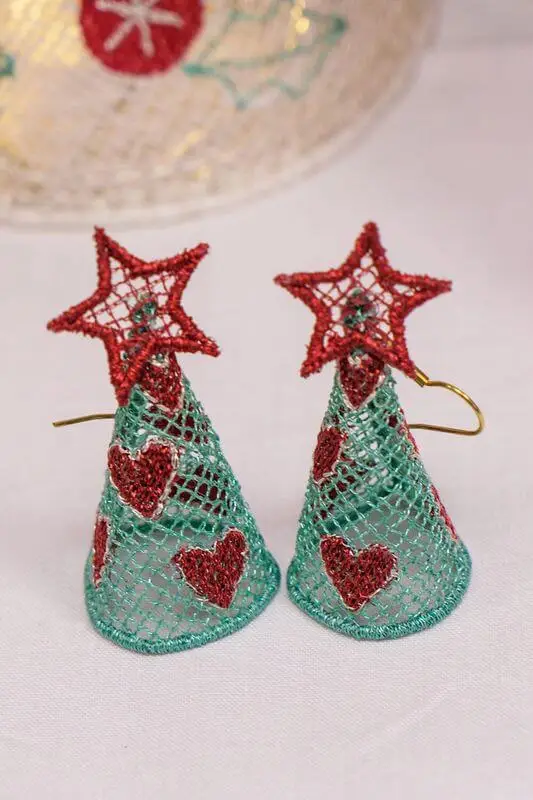How to Create a Glamorous Masquerade Mask with 3D feathers
Masquerade masks are a timeless accessory, perfect for carnival season, costume parties, or even as decorative pieces. With DRAWings PRO embroidery software, you can create a unique, embroidered masquerade mask adorned with 3D feathers. This tutorial will guide you through the process of designing and stitching an elegant mask with detailed feather embellishments. The goal is to create a professional-looking mask that is lightweight, durable, and visually stunning while incorporating dimensional embroidery techniques to elevate the design.
Designing the Feather Embellishments
When creating embroidered feathers, there are several challenges to keep in mind. One of the primary difficulties is ensuring a natural, flowing shape while maintaining structural integrity in the embroidery. Feathers need to appear delicate and airy, rather than overly dense and stiff. If the feather sections are placed too close together, the embroidery can become rigid, limiting movement and reducing the realistic look. Conversely, if the gaps are too wide, the feather may lack the necessary definition and appear incomplete. Proper spacing between sections is essential to striking a balance between detail and flexibility.
Another potential challenge is thread tension. Fine details in the feather design demand precise tension settings, as incorrect tension can cause distortion, misalignment, or looping stitches. Testing the design on a sample fabric before the final embroidery is a crucial step to ensure all settings are optimized. This test run helps identify any inconsistencies that might impact the final appearance of the embroidery, preventing wasted materials and ensuring a refined result.

Creating the Base Feather Shape
To begin, open DRAWings PRO and create a new design. Use the Ellipse Tool to draw an oval with a width of 30mm and a height of 100mm. A bright fill color helps in clearly seeing the shape, ensuring precision while working on details.
The feather shaft is essential for defining the structure. Drawing a slightly curved vertical line and duplicating it creates symmetry. Using the Knife Tool to divide the oval adds dimension, making the feather appear more natural when embroidered.
Adding Barb Sections
Using the Freehand Shapes Tool, draw curved lines along each side of the divided oval shape to define the barb sections of the feather. This process mimics the natural arrangement of feather strands, creating a more realistic embroidered effect. Each line should close upon release of the mouse button. The Freehand Tool remains active, allowing continuous addition of lines, which speeds up the workflow.
Once done, right-click to finalize the section, combining all the lines into a single object. Duplicating and mirroring the lines ensures symmetry and balance, making the final embroidery look more polished and refined.
Refining the Shape
Using the Node Editor, adjust the outer top nodes to create small gaps between sections, enhancing the organic look. Smoothing the bottom nodes allows a more natural tapering, mimicking real feathers. This step is essential for achieving a more professional, visually appealing embroidery design.
Adding Texture and Stitching Details
To enhance realism, set the fill type to “piping” with a density of 1.5mm. This helps create a textured, lightweight feather rather than a solid, heavy appearance. Removing Short/Long stitches ensures a soft, fluffy effect, reducing stiffness in the final embroidery.
For the shaft, using “satin serial” with a width of 3mm gives it a polished, raised effect. Converting the outline to an object allows more control over shape editing. Making the top pointy and the bottom thicker replicates the natural structure of a feather. Setting “Remove Overlaps” to “Never” ensures that the shaft remains prominent over the barb sections rather than blending into them.
Using the Stitch Flow Tool to adjust stitch directions refines the embroidery, ensuring smooth stitching that complements the feather’s shape. Saving the design to the Clipart Library makes future use easier, allowing quick insertion into different projects.
Incorporating Feathers into the Masquerade Mask
When incorporating feathers into the Masquerade mask, it is essential to consider placement, stability, and visual balance. Feathers should be positioned in a way that enhances the overall shape of the mask without overwhelming the design. Layering feathers with slight variations in size and orientation creates a more dynamic and natural effect. It is also crucial to ensure that the base fabric provides enough support for the additional feather embroidery to prevent distortion or sagging.
Inserting the Feather Design
Creating a new design and inserting the previously saved feather from the Clipart Library speeds up the process. Positioning it as the central feather sets the foundation for a symmetrical, well-balanced mask design.
Duplicating and scaling the feather to 85% creates a layered effect, adding depth and dimension. Changing the color enhances visual appeal, making the Masquerade mask more dynamic. Adjusting the outline ensures clean embroidery, preventing unwanted extra stitches.
Mirroring and repositioning additional feathers contributes to a natural, playful composition, improving the mask’s aesthetics. Varying feather sizes and colors enhances the design’s complexity, making it visually richer and more intricate.
Adjusting the Embroidery Sequence
Using Slow Redraw allows checking the embroidery order to avoid errors like unnecessary tacking stitches. Adjusting entry and exit points in Manual mode refines the stitch flow, preventing visible jumps or distortions. A well-optimized sequence results in a clean, professional embroidery finish.
Creating the Masquerade Mask Base
When creating the mask base, it is crucial to focus on both structure and comfort. The base should be sturdy enough to support the embroidered details and 3D feathers without becoming too rigid or heavy. Choosing the right fabric is key; felt provides durability, while organza adds a lightweight elegance. Proper stabilization ensures that the embroidery remains smooth and prevents puckering or distortion.
Additionally, the design should align with facial contours for a comfortable fit, with eye holes precisely placed for visibility and ease of wear. Balancing aesthetics with functionality will result in a mask that is both visually stunning and comfortable to wear for extended periods.
Setting Up the Masquerade Mask Design
Importing or creating a mask template simplifies the base structure. Setting the fill to “Applique” ensures that only necessary placement and tack-down stitches are included, reducing unnecessary stitch density.
Adding an “Auto-Border” with an inside distance of 5mm creates a structured edge, making the mask sturdy while providing a precise cutting guide. Choosing “running” stitch type for the border keeps the outline lightweight and clean.
Selecting a stippling fill for the mask adds texture while maintaining flexibility. Decorative outline stitches enhance the mask’s visual appeal, making it more elegant and refined.
Verifying the Embroidery Sequence
Using Slow Redraw confirms that all stitches appear as intended. Ensuring “Remove Overlaps” is set to “Never” prevents decorative stitches from being hidden under the applique, preserving intricate detailing.
Material Selection and Preparation
The success of any embroidery project lies equally in material preparation as in design.

For this project, you will need:
- Embroidery hoop (ensures fabric stability)
- Water-soluble stabilizer (allows for clean removal without visible backing)
- Organza fabric (adds a delicate, lightweight aesthetic)
- Felt fabric (provides structure for the mask)
- Paper tape (secures layers without shifting)
- Assorted embroidery threads (match upper and bobbin thread for a seamless look)
Embroidering the Mask and Feathers
Before embroidering the mask and feathers, it is essential to prepare both the materials and the embroidery machine settings to achieve a clean and professional result. The choice of stabilizer plays a significant role—water-soluble stabilizer is preferred for creating a seamless finish without visible backing, while a temporary adhesive can help keep layers in place without causing fabric distortion.
Thread selection is also crucial; using high-quality embroidery threads that match both the upper and bobbin threads ensures a polished look. When hooping the fabric, it is important to secure it tightly to prevent shifting during stitching, which can lead to misaligned embroidery.
Additionally, running a test stitch on scrap fabric before embroidering the final design helps identify any necessary tension or density adjustments, reducing the risk of errors. During the embroidery process, monitoring the machine’s progress ensures that any issues, such as thread breakage or skipped stitches, are promptly addressed.
Finally, careful handling of the finished embroidery, including precise trimming and proper dissolving of stabilizer, ensures that the mask and feathers maintain their intended structure and aesthetic appeal.
Stitching the Feathers
Hooping stabilizer with organza fabric ensures stability while maintaining a lightweight effect. Using matching thread colors enhances the final appearance, preventing visible mismatched stitches.

The embroidery sequence follows a logical order, starting with the central feather to ensure alignment. Carefully trimming excess stabilizer and dissolving the remaining parts keeps the edges clean. Running a lighter along the edges seals the fabric, preventing fraying and extending durability.
Embroidering the Mask
Using water-soluble stabilizer results in a polished, professional-looking finish with no visible backing. Placing the feathers in position before stitching ensures proper alignment. Paper tape temporarily secures layers, preventing movement during embroidery.

Continuing with the decorative stitches adds refinement, bringing the mask’s design together. Once complete, removing excess stabilizer and cutting the mask along the outline stitches finalizes the shape while preserving structural integrity.
Finalizing the Mask
Trimming carefully around the shape ensures a clean cut, avoiding damage to the feathers. Cutting the eye holes with precision maintains symmetry and comfort when worn. Dissolving remaining stabilizer provides a professional, seamless finish.
Completing Your Masquerade Mask
The final mask is lightweight, durable, and intricately designed. The combination of embroidery techniques and 3D elements enhances its uniqueness. This versatile design can be worn as an accessory, used as home decor, or given as a personalized gift.
Using DRAWings PRO embroidery software allows full customization, enabling variations in feather designs, colors, and textures. Experimenting with different settings and materials ensures each creation is unique and suited to different themes or occasions.
For more embroidery inspiration, explore additional tutorials and refine your skills with new creative projects.
Happy crafting and don’t forget to share your creations with us in the
DRAWings PRO Help Group!
You can download the .DRAW file of the project and the image used, for free, from the link below:
- Project’s .DRAW file: How to Create a Glamorous Masquerade Mask with 3D feathers
It can open only with the XI and later versions of DRAWings embroidery software
























